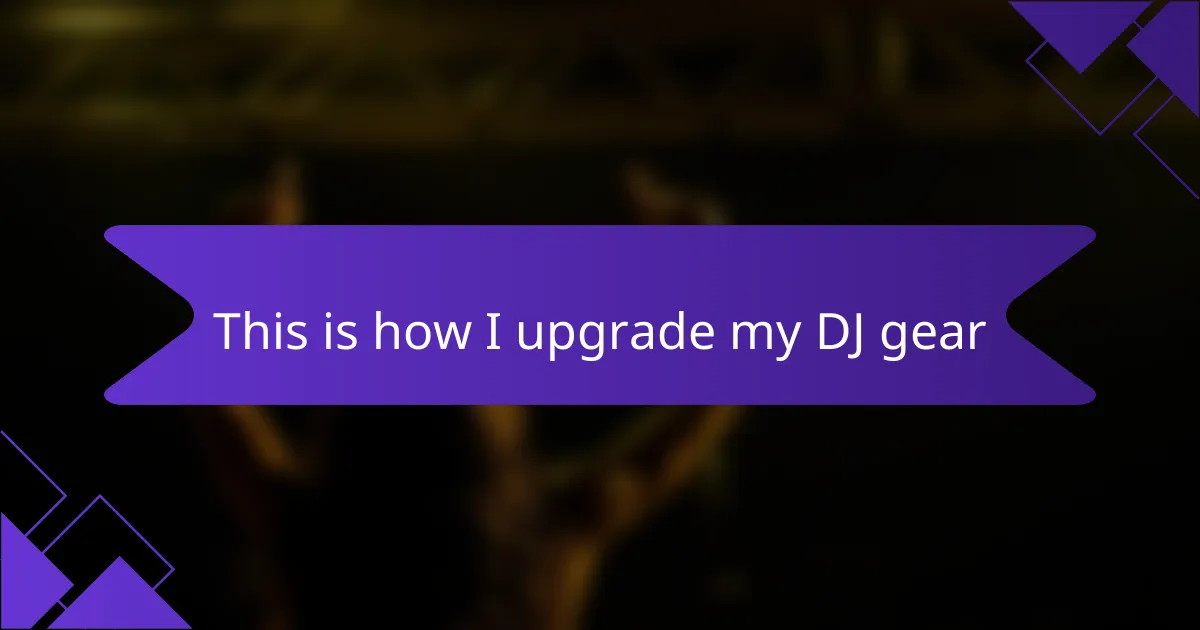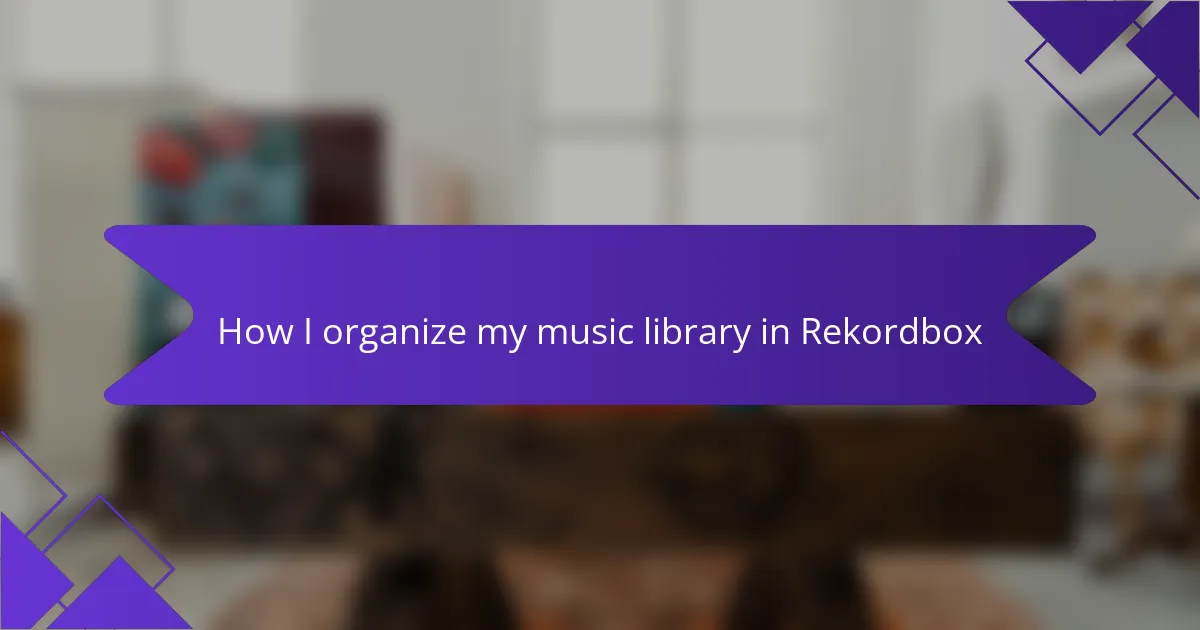Key takeaways
- Engaging with the crowd through eye contact and body language fosters a strong connection and enhances the overall experience.
- Adapting the music set in response to the audience’s energy levels is crucial for maintaining engagement and transforming the atmosphere.
- Creating memorable experiences, such as sing-alongs and personal anecdotes, builds a sense of community among attendees.
- Reading crowd dynamics allows DJs to elevate their performance, turning a good night into an unforgettable one.
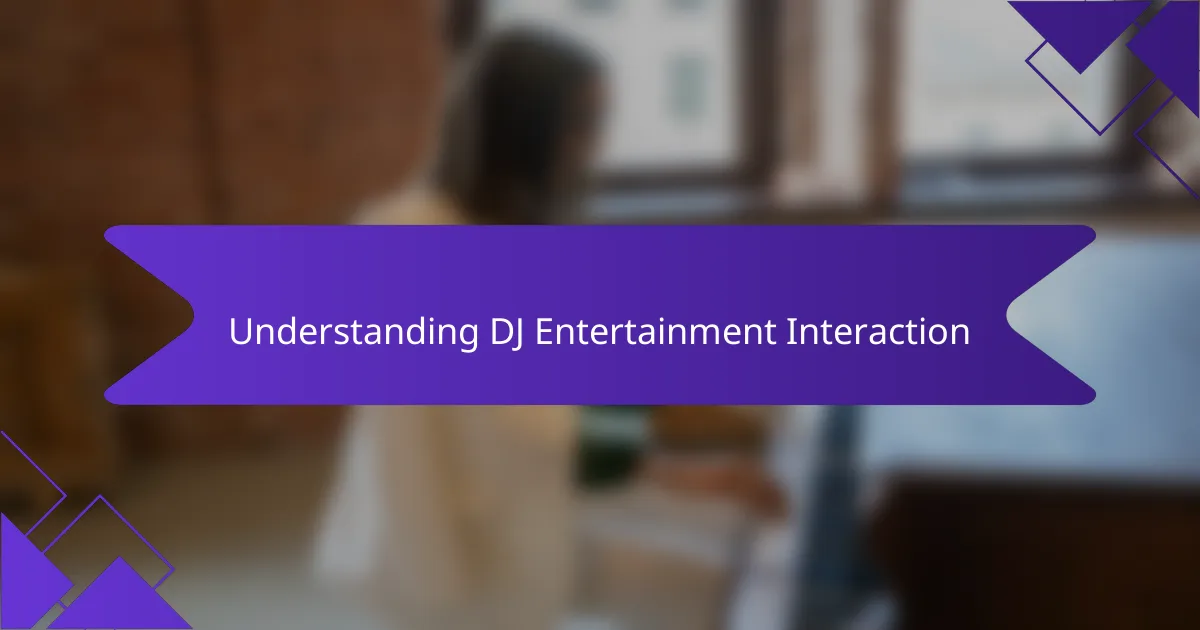
Understanding DJ Entertainment Interaction
When I think about DJ entertainment interaction, I realize how crucial it is to create an unforgettable experience for the crowd. Engaging with the audience isn’t just about the music; it’s about the energy exchange. During my sets, I always look for that moment when the crowd reacts to a drop or a favorite track—I can physically feel the excitement in the air, and it pushes me to deliver even more.
One of my favorite ways to connect is through eye contact and body language. When I see someone dancing and having the time of their life, it inspires me and reinforces a bond with the audience. On the flip side, if I notice folks looking a bit disengaged, I take it as a challenge to elevate the vibe and bring them back to the dance floor.
Ultimately, understanding the crowd is about reading the room and adapting on the fly. It’s a blend of skill and intuition, and those moments of connection can turn a good night into a great one—a true highlight of my DJ journey.
| Interaction Style | Description |
|---|---|
| Eye Contact | Creating a connection by locking eyes with the audience. |
| Body Language | Using gestures to invite the crowd into the experience. |
| Shout-outs | Personalized engagement by addressing specific individuals or groups. |
| Adjusting the Set | Modifying the playlist based on audience reaction. |
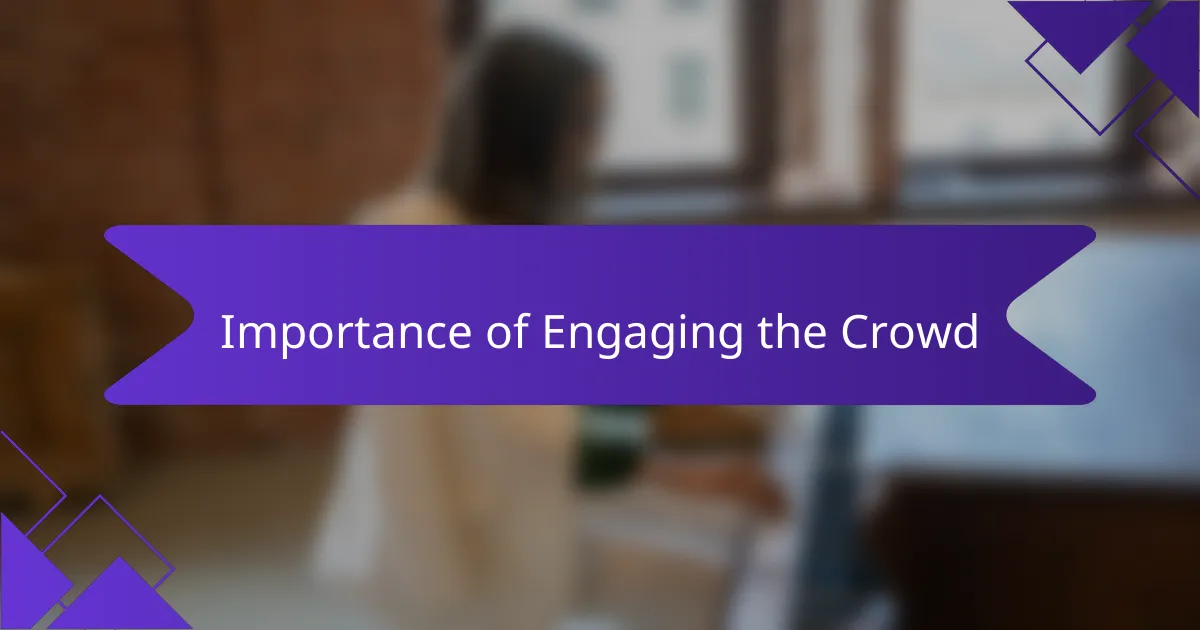
Importance of Engaging the Crowd
Engaging the crowd is like creating an electric atmosphere that can elevate a set from good to unforgettable. I remember one night where I connected with the audience through a sing-along to a classic track. The energy in the room shifted palpably; everyone was smiling, singing, and dancing together. It’s moments like these that remind me how vital it is to foster that connection.
When I engage with the crowd, I don’t just play music; I build a shared experience. The right interaction can turn passive listeners into active participants, transforming the event into something truly special. Here are some key points I’ve learned about the importance of crowd engagement:
- Creates a memorable experience for attendees.
- Fosters a sense of community and belonging among the audience.
- Allow me to read the room and adapt my set based on their energy.
- Encourages crowd participation, making everyone feel included.
- Helps establish a rapport that can lead to future gigs through positive word-of-mouth.
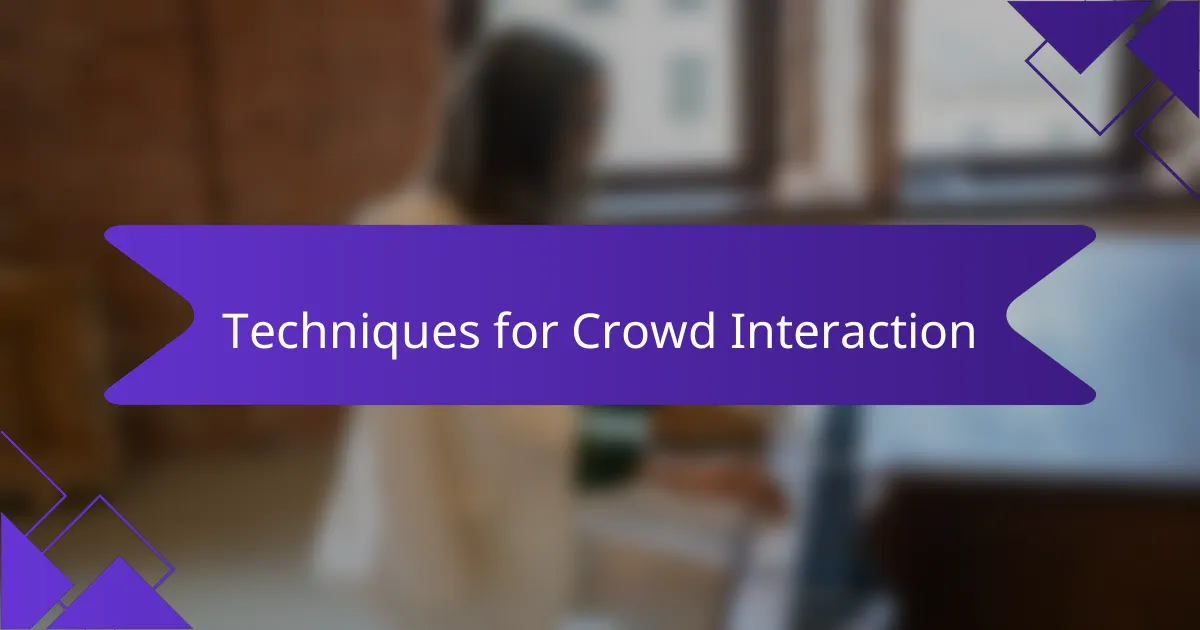
Techniques for Crowd Interaction
When it comes to interacting with the crowd during my sets, I find that authenticity is key. I remember a specific gig where the energy was palpable, and I chose to step into the crowd, soaking in the moment. That connection transformed the atmosphere, making everyone feel more like participants rather than just spectators.
One effective technique I use is to read the crowd’s energy and adjust my set accordingly. This keeps the audience engaged and excited. Here are some strategies I employ to enhance crowd interaction:
-
Eye Contact: I make sure to lock eyes with different members of the audience. It creates an intimate connection that makes them feel seen.
-
Call and Response: Utilizing simple phrases that the crowd can repeat creates a fun interaction that energizes the room.
-
Physical Movement: Whether I’m dancing or encouraging the crowd to move, my physical presence invites them to engage.
-
Storytelling: I occasionally share short, personal anecdotes about the tracks I play, giving the audience a glimpse into my musical journey.
-
Requests: I encourage song requests through gestures or shout-outs, fostering a sense of community and collaboration.
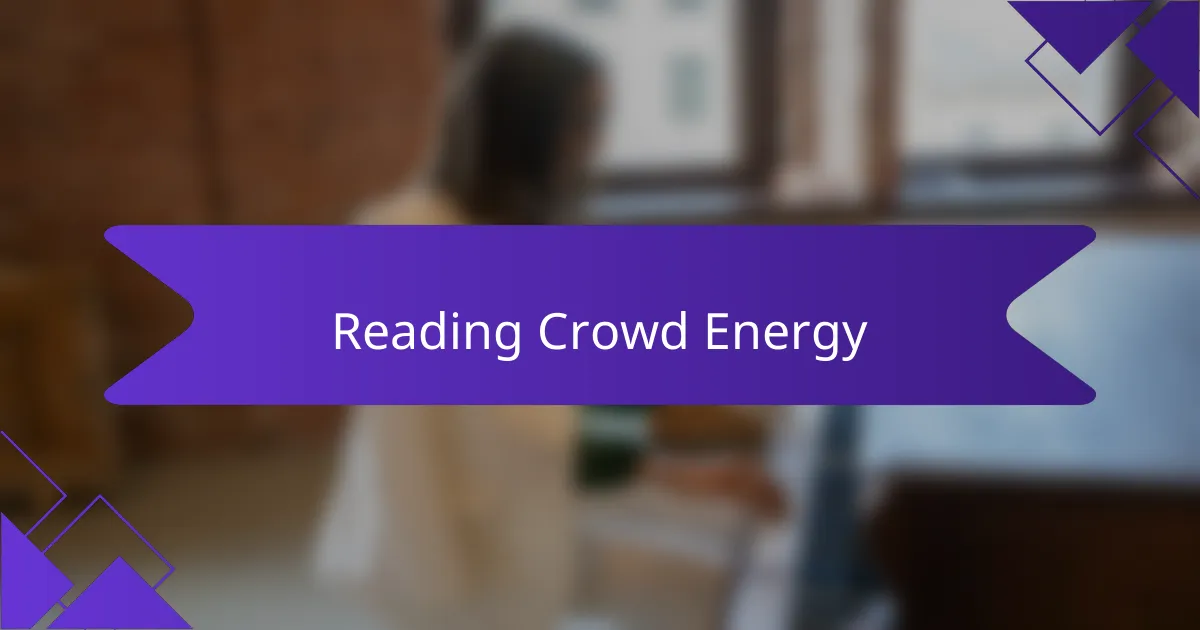
Reading Crowd Energy
Reading the crowd’s energy can be one of the most rewarding aspects of being a DJ. I’ve found that the vibe of the audience can fluctuate quite a bit throughout the night. Sometimes, the energy is electric, and other times, it’s a bit more subdued, requiring me to adjust my approach on the fly.
For example, I remember a night at a local festival where the crowd started off slow. By carefully selecting a few uplifting tracks, I could literally feel the whole atmosphere shift. The collective cheer and movement were contagious! Reading those subtle shifts—like the crowd’s cheers, swaying, or even [censured] expressions—helps me dial in the perfect set for the moment.
Understanding the crowd’s energy not only enhances the experience for them but also for me as a performer. It becomes this beautiful, dynamic exchange that fills the room with excitement.
| Crowd Energy Level | DJ Response |
|---|---|
| High | Play more upbeat tracks to keep the momentum going. |
| Moderate | Introduce new sounds but maintain some familiarity. |
| Low | Choose tracks that are more engaging to uplift the crowd. |
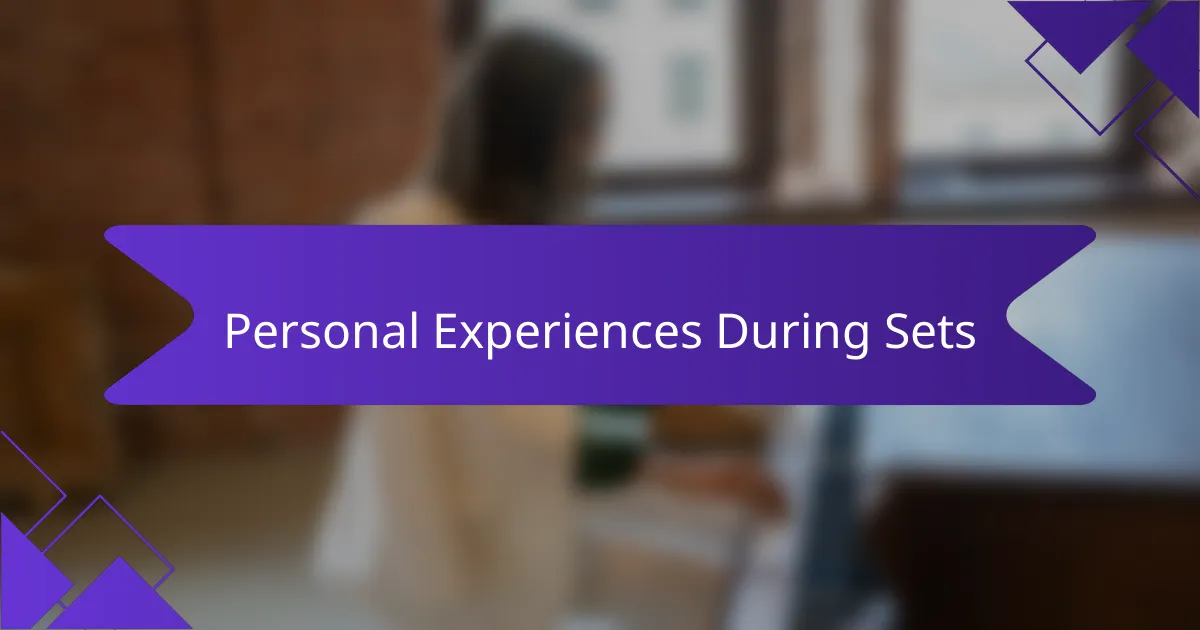
Personal Experiences During Sets
During my sets, I often find myself in remarkable moments of connection with the crowd. I think back to a night where a friend pointed out a section near the front that was really vibing with the bass drops. It felt exhilarating to build off their energy, weaving through tracks that matched their enthusiasm. I realized how, in those moments, I wasn’t just mixing music; I was riding a wave of shared exhilaration that made the entire experience feel electrifying.
I also remember an instance when I spotted a young woman who seemed lost in her thoughts, hanging back while everyone else danced. In that moment, I shifted my approach. I dropped a classic track that I knew would resonate with the crowd, watching as her expression transformed from contemplation to joy. It’s fascinating how the right song can reach someone deeply, creating a bridge that pulls them into the shared experience. It reminds me that my role as a DJ transcends just playing tracks; it’s about tuning into the collective heart of the room.
One of the most fulfilling aspects of crowd interaction for me is the spontaneous call-and-response moments. I vividly recall a time when I tried to get everyone to sing along to a popular anthem. The chorus echoed back at me, and you could feel the room breathe as one. In those instances, I can’t help but ask myself: how can something as simple as a melody turn a crowd of individuals into a single undulating entity? The magic of those moments is something every DJ should strive to experience.

Adapting to Audience Response
When I’m mixing tracks, I keep a close eye on the crowd’s energy. If I notice that people are losing interest, I quickly switch gears to a more upbeat track. For example, I once played a mellow set at an outdoor festival, but the audience was itching for something livelier. I transitioned into a high-energy dance track and the response was electric.
Adapting to the audience’s reactions is truly an art form. I remember a time when I dropped a track that I thought would be a winner, but the crowd seemed indifferent. Rather than sticking to my original plan, I took a moment to assess what might resonate better and chose a classic everyone loves. The shift turned the vibe around, and I felt the connection deepen instantly.
Ultimately, being attuned to the crowd allows me to mold the evening into something memorable for everyone involved. Every interaction shapes the set, fostering a shared experience that brings the music to life.
| Audience Response | My Adaptation |
|---|---|
| Low Energy | Switch to upbeat tracks |
| Indifference | Change the genre or style |
| High Excitement | Build the energy further |

